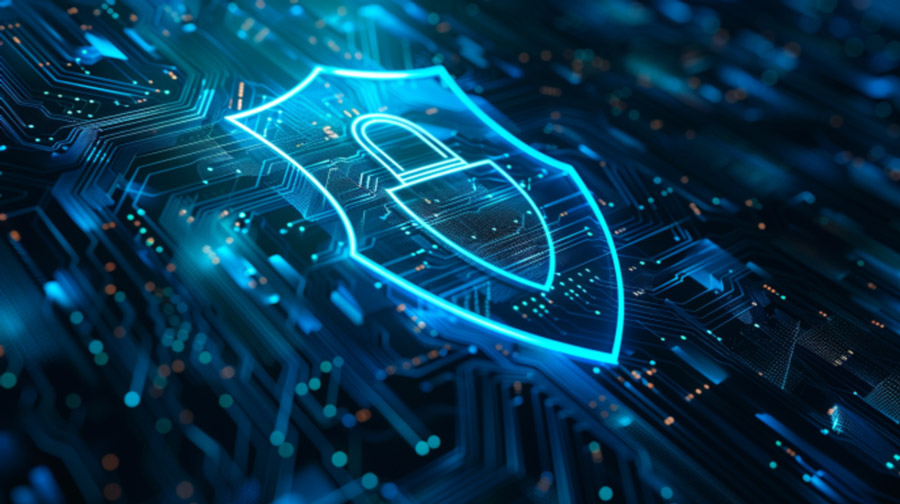What is Backup?
Backup is the process of creating backup copies of your files or data so that you can restore them in the event of loss, destruction, damage, or attack on the original storage location.
In the year 2024, digital data defined the way we live and work. Our data is now at the core of our daily lives, making the value of our files of immense importance. For this reason, it is extremely important to understand what backup is and how it can protect us from potential risks and data loss.
More specifically, we refer to backup as the process of creating backup copies of our data and files. In practice, this means copying our files and information to an alternative location, such as an external hard drive or cloud server, so that we can access them at any time, regardless of what happens to the original storage device.
What backup methods are there?
There are several methods for performing a backup, each with its own advantages and limitations. Let’s take a look at the main ways available:
External Hard Drives
External hard drives are one of the most popular methods, especially for ordinary users. They connect to the computer via USB and allow for relatively fast data transfer, depending on the type and characteristics of the hard drive (HDD or SSD).
USB Flash Drives
USB Flash Drives are portable storage solutions that allow you to save files from your computer. Since USB drives are typically smaller than external hard drives, it is recommended to save only the most important files or documents, rather than attempting to back up the entire system.
If you’re having trouble and your files aren’t showing up on your USB stick, read our detailed guide on what could be happening and how to resolve the issue.
Cloud Storage
With the rapid development of technology and increasing Internet speeds, cloud storage services have become one of the dominant backup methods, as they offer secure data storage on remote servers and ensure data accessibility from anywhere with an Internet connection.
Additionally, most providers of such services provide encryption services, ensuring your data remains secure during storage.
Network Attached Storage (NAS)
NAS (Network-Attached Storage) storage systems are central data servers that offer shared storage space for all users on a computer network. As such, they are a very popular choice for businesses, as they provide an extremely efficient way to manage, store, and protect their data.
Managed Cloud Servers (IaaS)
Managed Cloud Servers, or IaaS (Infrastructure as a Service), is a flexible and cost-effective solution for businesses, allowing you to rent servers at a fixed monthly cost without the need to purchase and maintain equipment. Instead of incurring costs for electricity and upgrades, Managed Cloud Servers offer reliability, 99.99% availability, and easy upgrades without interruption to your operation.
Which way should I choose?
The choice between Cloud and Local backup methods often depends on the needs and priorities of each business or user. Both methods have their advantages and disadvantages.
Advantages of Cloud Backup
- Saving money and resources
- Data protection in case of disasters
- Access data from anywhere
- Greater data security
- Protection from cyberattacks
- Easy scalability for large volumes of data
Disadvantages of Cloud Backup
- Long download time for large backups
- The possibility of data loss at contract expiration depends on the provider
- Possible difficulty in migrating to new cloud providers
- A reliable and stable internet connection required
Advantages of Local Backup
- Faster recovery of large volumes of data
- Knowing the location of your data
Disadvantages of Local Backup
- Risk of loss due to local problems or natural disasters
- Risk of data loss from cyberattacks (e.g., ransomware)
- Difficulty in scalability for large volumes of data
Why is backup important?
The primary reason for performing backups at regular intervals is to create a copy of our data, allowing us to access it if the original data encounters a problem.
These problems can be caused by our own error (e.g., accidental deletion, hard drive crash), device malfunction (e.g., hardware damage, software errors), or even by external factors such as malicious attacks (e.g., viruses, malware).
As can be seen, the existence of these copies allows individuals and businesses to easily and quickly recover their data in the event of any malfunction in the original storage device.
How do I back up to a computer?
Backup on Windows
Windows provides built-in backup solutions, making the process of backing up your data easy. If you are wondering how to protect your files and information with an effective Backup, follow the instructions below, depending on the version you are using.
Windows 10 backup
- Start by connecting an external drive to your computer.
- Select the Start button, then select Settings > Update & Security> Backup > Add a drive. Next, select an external drive or network location for your backups.

- A new Windows page will appear. Then turn on the switch to enable the option “Automatically back up my files.” This will allow Windows to automatically back up your files to the drive whenever it is connected to your computer.

- Click “More Options” to continue. You will be taken to a screen that allows you to set the frequency of backups, how long to keep backups, and which folders to protect.

Windows 11 Backup
- Connect an external hard drive to your computer.
- Then, open “System Settings” > “Storage” > “Advanced storage settings” > “Backup Options”.
- Click “Add a drive” under “Back up using File History.”

- Click “on” under the “Automatically back up my files” option.

- You can then select the “More options” option to configure how often File History backups occur, how long those backups are kept, and which folders are backed up.

- When you’re done, save your changes and exit. Then, click “Backup now.” Windows 11 will automatically back up your files to disk.
Backup to MAC
Similar to Windows, Apple’s Mac computers offer built-in solutions for backing up your data.
More specifically, there are 2 ways to create a backup of the most critical files on your device.
Back up with Time Machine.
- Open the Apple menu in the upper left corner and select System Preferences.
- Click on Time Machine.
- Select Select Disk.
- Choose the external hard drive you want to use for the backup.
- Confirm the disk you will be using. It may need to be licensed, formatted, or set up first.
- Select Back Up Automatically to continue backing up automatically.
Backup with iCloud.
- Click the Apple logo in the lower left corner and select System Preferences.
- Click on Apple ID.
- Click iCloud on the left and choose what you want to store in iCloud on the right.
- Also, select iCloud Drive and click Options. Here you can choose all the programs, files, and data you want to store in your iCloud.
- iCloud Drive is now available in the Finder. You can manually transfer files there.
* iCloud does not offer a complete backup like Time Machine, but it allows you to store specific parts of your data in Apple’s cloud storage.
How do I back up a mobile phone?
The value of mobile phones now goes beyond simple communication. They are one of the primary storage spaces for important personal data, holding not only contacts and messages but also valuable photos, videos, and professional files, among other things. However, many times we neglect the security of this information and do not create appropriate backups to ensure that even if the mobile is damaged, lost or stolen, our information will remain safe and accessible and we will not need to turn to, for example, data recovery services from a mobile with a broken screen.
Backup on Android
Google offers all account holders 15GB of free cloud storage for photos, videos, and device backups. And even if 15GB isn’t enough for someone, there are additional options to get more storage for a few dollars a month.
To start backing up with Google One, follow these steps:
- Download and open the Google One app on your Android phone.
- Click the “Set up device backup” button to get started.
- Tap “Enable” to turn on Google One backups.

- Tap “Continue” to grant the appropriate permission to the Google Photos app. If you don’t plan to use Google Photos to store your photos and videos, tap “Cancel.”
- Tap the “Backup now” button to start backing up your phone to Google One.
- Allow Google Photos access to the Google One app.

- Once the backup process is complete, refer to the “Backup details” section for more information.
It is worth mentioning that if you have lost your data, we offer a specialized data recovery service for Android devices.
Back up to iPhone via iCloud
When it comes to backing up your iPhone, the easiest option, and the one recommended by Apple itself, is to back up to iCloud. The process is quite simple:
- Connect to a Wi-Fi network.
- Go to Settings, tap your name, and then tap iCloud.
- On the iCloud page, scroll down and tap ” iCloud Backup.” Ensure the switch is turned on to enable automatic backup when your iPhone is charged, locked, and connected to Wi-Fi.
- Then, click “Backup Now”.
- Select files, such as photos, that you want iCloud to back up (you can turn off various categories that you don’t care about).
Additionally, we offer specialized iPhone data recovery services for cases of data loss, whether caused by a technical issue or other unforeseen circumstances.
Viber Backup
Viber is one of the most popular messaging and calling apps in the world, allowing users to communicate through various methods (photos, video calls, etc.). If you want to be sure that this data is safe, protected, and can be transferred in case you change devices, then follow these 2 methods:
First Method – Automatic Backup on Viber
- Select “Settings” from the menu with more options.
- Go to “Accounts”.
- Click on “Viber Backup”.
- Click “Auto Backup”.
- Choose how often you want your Viber account to be automatically backed up.
Second Method – Backup Viber via Email
- Open your Viber account.
- Go to “Settings”.
- Click on “Email message History”.
- Select Email.
- Add an email where you want the backup of your Viber chats and messages to be sent.
Gmail Backup
Gmail is used by millions of people worldwide to send and receive emails, manage contacts, and perform numerous other purposes.
We all understand that emails often contain important business information or files, which are vital to keep safe and accessible in case of loss or deletion.
The easiest way to backup your emails is through Google Takeout:
- Step: Log in to your Gmail account.
- Step: Select the “Manage your Account” option. Then, in the new window, select the “Data and personalization” option.

- Step: Scroll down and select the “Download your data” option.

- Step: Click the Deselect All button.
- Step: Next, scroll down and click on the option related to mail.

- Step: Then, from the options that appear, disable everything except “Include all messages in Mail.”

- Step: Scroll down and select “Next Step”.
- Step: Select the “Send download link via email” option as the sending method.
- Step: Next, select the file type and size of the backup files.
- Step: Click the “Create Export” icon to be notified when your file is ready.
- Step: Finally, when the backup is complete, you will receive an email with a download link (Download your files).

WhatsApp Backup
Similarly to Viber, we often share important information and store memories on WhatsApp that we would never want to lose. Therefore, the solution here is to create regular backups of our messages and conversations.
How to backup WhatsApp on Android:
- Open WhatsApp on your Android device and tap the three dots in the top right corner of your screen.
- Tap “Settings” and then tap “Chats.”
- Tap “Chat backup,” and then on the next screen, tap the green “Create backup” button.
To schedule regular backups, tap “Back up to your Google Account” and set the frequency. Then check that the selected Google account and Wi-Fi network are chosen correctly.
How to backup WhatsApp on iPhone:
- Open WhatsApp and tap “Settings” in the bottom right corner of your screen.
- Click “Chats” and then click “Chat backup”.
- Click “Back Up Now”.
You can also enable automatic backup by tapping “Automatic Backup,” signing in to your iCloud account, and selecting your desired backup frequency.
How easy is it to recover data after a Backup?
In ideal circumstances and if everything has gone well, the process of recovering data after backup is quite simple and should be completed quickly and easily. However, there are some cases where specific problems may arise during this process.
More specifically, some factors that can affect recovery after backup have to do with:
- Backup type: The choice between different types (e.g., incremental, full, differential).
- The type of data: Some data may require special recovery procedures or tools.
- Backup frequency: The frequency with which backups are created affects the amount of data that can be recovered.
In these cases, our team is here to help! We specialize in data recovery solutions and offer dedicated products with the highest success rates, using leading tools and expertise.
What should I remember?
With the rise of digital technologies, the value of our data is increasing and is expected to continue growing exponentially. Whether it’s photos, personal files, or business data, losing it can be devastating.
A reliable backup is the first and most essential shield we have against the risks of data loss! After all, as the ancient saying goes, “Prevention is better than cure”!
And if prevention isn’t enough, we offer specialized services for restoring deleted files from the Recycle Bin in case your files were accidentally deleted.


















